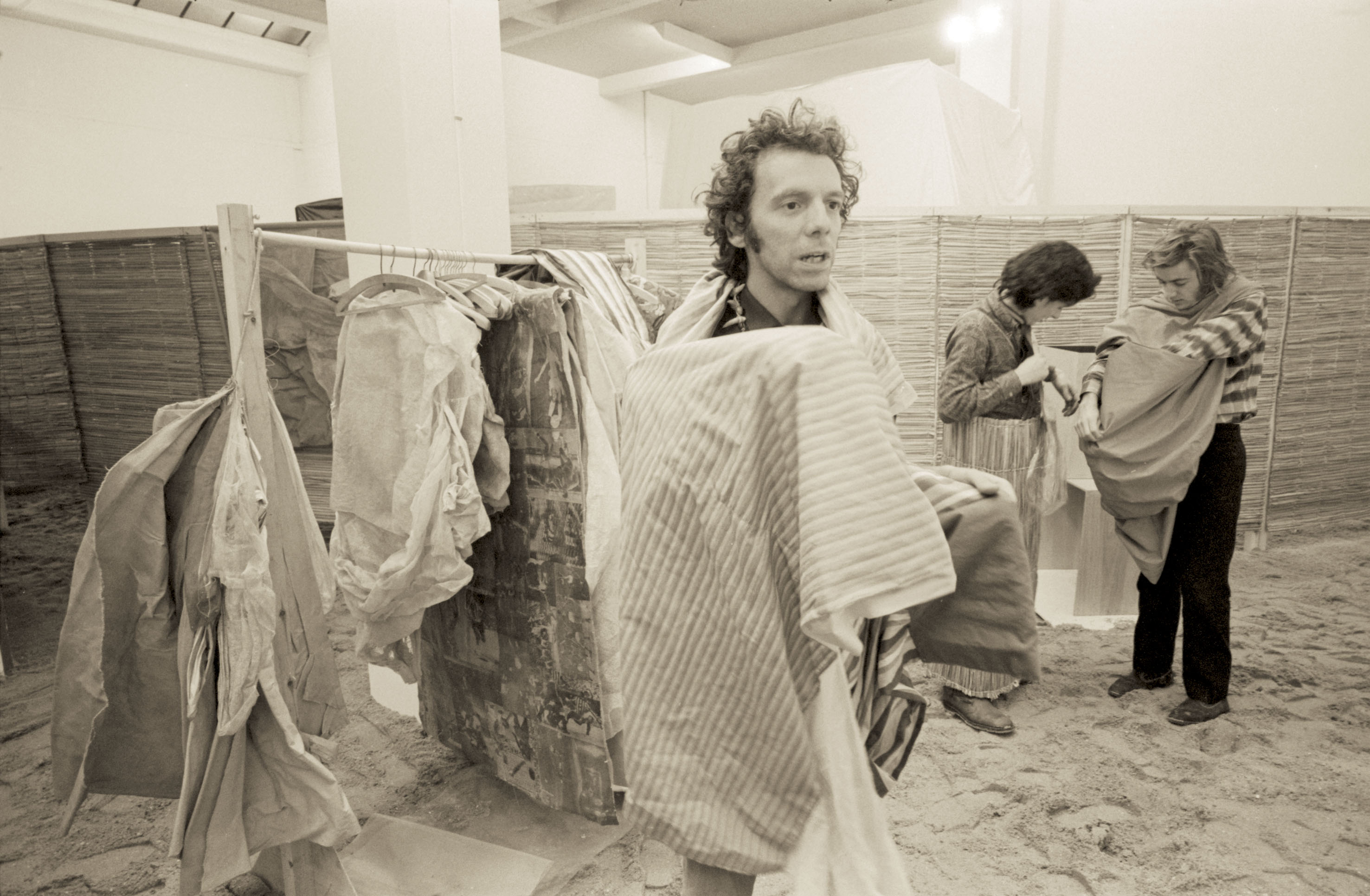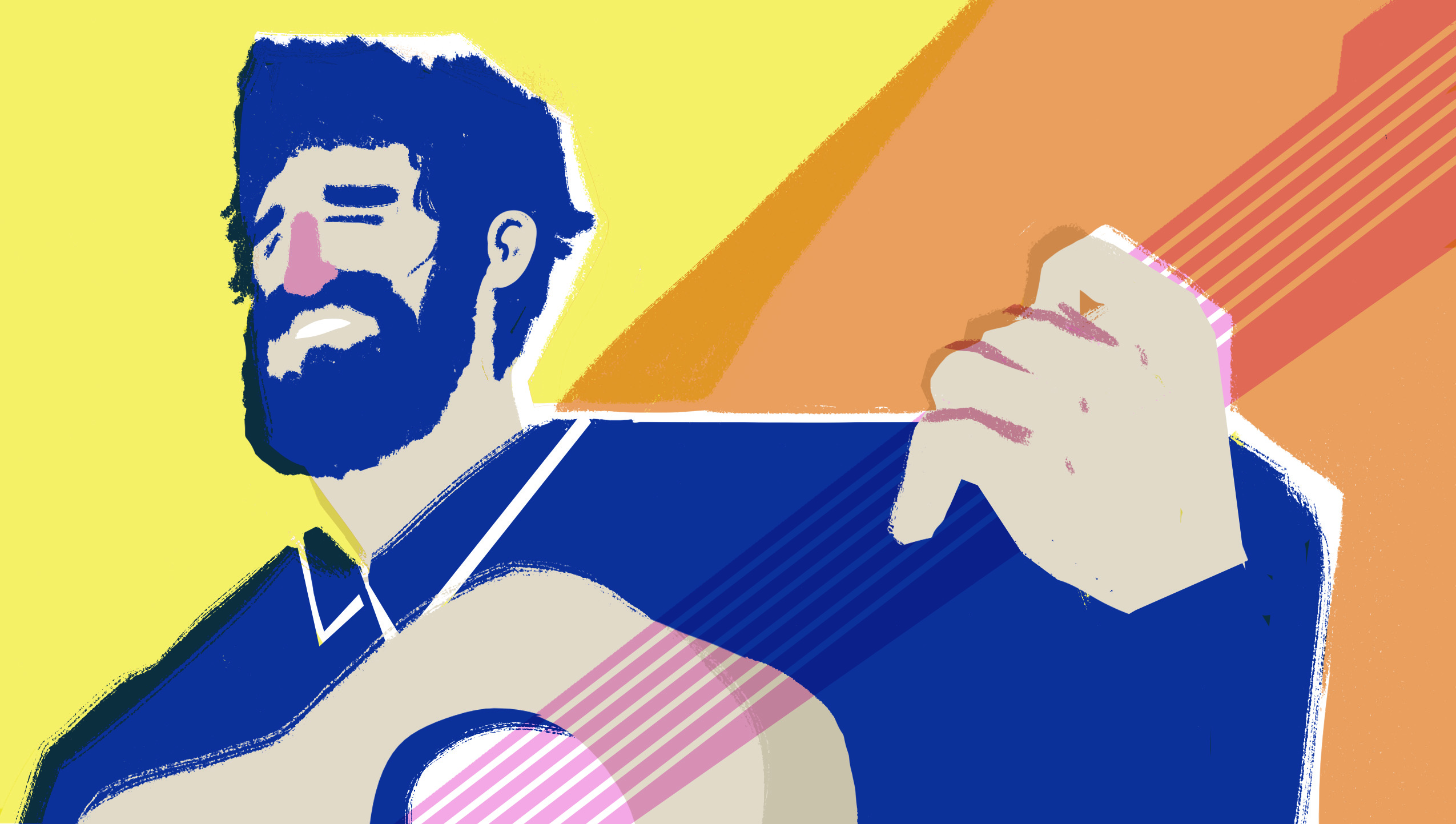
When Caetano Veloso released the psychedelically eclectic song “Tropicália” in 1968, a complex, avant-garde movement of the same name was actively mobilizing in his native Brazil. The country had experienced the rise of a military dictatorship only four years prior.
Tropicália was a major cultural movement that flourished in the 1960s and 1970s; it was Brazil’s answer to a politically and socially oppressive status quo. It took its name from a 1967 art installation by the Brazilian artist Hélio Oiticica; Veloso himself was the first to appropriate the term in an effort to describe the radical cultural cannibalism occurring within Brazil’s art and music communities.
“Tropicália,” the artwork, is an immersive environment taking the form of a sandy land mass equipped with a carefully laid gravel pathway, potted tropical plants, and two live caged parrots.
As with any artwork, “Tropicália” requires an audience willing to humor its creator and take part in a conceptual experience. Unlike other artworks, however, this work requires viewers to step into the piece; to walk through it; to perceive the environment physically.
At its most superficial, “Tropicália” is a manifestation of tropical colors and images that conjure a stereotypical idea of Brazil; you can almost hear Veloso’s colorful verses play as you walk through. On a deeper level, the installation exists as a conceptual space that allows the viewer to both participate and observe, confronting it as both a literal environment and a conceptual art piece. It is a mythical space that masquerades as a reality, or vice versa.
You can experience “Tropicália” first-hand at the Art Institute of Chicago, in addition to an overwhelming number of other artworks by Oiticica in the massive retrospective “Hélio Oiticica: To Organize Delirium.”
The show, which traveled from the Carnegie Museum of Art in Pittsburgh and will be heading to New York City’s Whitney Museum of Art this summer, is only the second retrospective of Oiticica to be on display in the United States. (The first toured the United States and Europe in 1993).
Oiticica’s work has historically flown under the radar in North America, as is the case with many modern and contemporary artists working outside of the Western canon. However, many major encyclopedic museums and institutions in the U.S. are in the midst of a “global moment” and seem to be putting more effort into displaying artists from countries that have been previously overlooked in favor of typical Western histories and aesthetics.
“To Organize Delirium” has some of the most iconic works of Oiticica’s fairly short career on view. (The artist died in 1980 at the age of 42.) Most of the pieces are exhibition copies, as almost 90 percent of the originals were destroyed in a fire in 2009. This doesn’t necessarily detract from the experience. Oiticica’s artistic goals were anti-institutional and his concepts often trump the forms they take on.
In the first galleries of “Delirium,” viewers are immediately confronted with large geometric forms suspended from the ceiling — Oiticica’s “Bilaterals” are literal 3D versions of his earlier experiments in abstract, geometric painting. In the early 1960s, Oiticica borrowed from the modernist developments in color and form of painters such as Piet Mondrian (Netherlands) and Kazimir Malevich (Russia). With the flatness of their predecessors discarded, the “Bilaterals” become paintings that physically enter a viewer’s space and take on the roles of mini environments.

In the center of “Tropicália” — and also on display separately — are “Penetrables,” which were inspired by the improvisational architecture of Rio de Janeiro’s favelas. The pieces, as their name suggests, are literally meant to be “penetrated” by the viewer, and as with many of Oiticica’s artworks, are participatory in nature.
The most impressive and interactive of these objects is “Filter Project — For Vergara (Projeto Filtro — Para Vergara)” from 1972, which was made while Oiticica was living in New York City. The maze-like structure enables viewers to walk through brightly colored plastic curtains while televisions and radios play in varying corners, confusing and attacking the senses.
For the entirety of his career, Oiticica was mistrusting of the institutionalization of art and was far more committed to creating art that physically moved, immersed, and reoriented the body and the senses. The irony of having an anti-institutional artist on display in a major art institution is most obvious when experiencing Oiticica’s “Parangolés,” which can be found hanging on the wall near “Tropicália” and can be touched and worn.
The colorful, geometric capes were one of Oiticica’s most radical inventions: They were meant to be put on and “activated” by participants through movement and dance. “Parangolés” behaved as democratic objects, meaning any kind of person and any kind of body could inhabit them.
Within the institutional restrictions of a major public art exhibition, the participatory quality of the capes feels somewhat cheapened — you can’t exactly leave the museum wearing a “Parangolé” and dance the samba in the streets of Chicago. It is still an experience like no other, however. Where else are you allowed to wear the art?
The many other pieces on display in “To Organize Delirium” include films, readymades, and plans for projects never realized. Despite the modern institutionalization of art that previously radically existed on the fringes, the display of these important objects is vital to making contemporary art a global concept.
This particular body of work inverts the traditional terms of a museum in an exciting way — and aside from being political and conceptual, Oiticica’s artworks can become fun and childlike, playing into the viewer’s inner desire to participate and experience physically, rather than intellectually. To say whether or not the institution has figured out how to truly organize the delirium is premature, but we are lucky to be experiencing this developing moment.
“Hélio Oiticica: To Organize Delirium” is on view at the Art Institute of Chicago through May 7, 2017.







